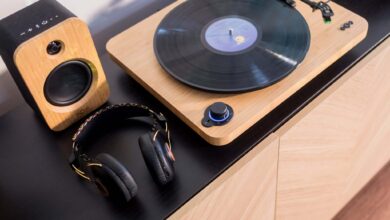Different Types of Paddle Boards Available in the UK for 2024

Introduction to Paddle Boarding
Paddle boarding has gained immense popularity in the UK, and with 2024 promising new advancements and designs, it’s essential to know which paddle boards stand out. Whether you’re a beginner or an experienced paddler, choosing the right board can enhance your experience on the water. This article will guide you through the various types of paddle boards, how to choose the right one, the essential features to look for, additional accessories, and tips for maintenance and care.
Types of Paddle Boards
Inflatable Paddle Boards
Inflatable paddle board are highly versatile and portable. They can be easily deflated, rolled up, and transported, making them an excellent choice for travelers. The latest models are incredibly durable, mimicking the performance of hard boards. Inflatable boards are typically constructed from military-grade PVC, ensuring they withstand rough conditions. These boards are suitable for a variety of activities, from leisurely paddling to more adventurous excursions.
Hard Paddle Boards
Hard paddle boards, also known as epoxy paddle boards, are preferred for their superior performance and speed. They are ideal for racing, touring, and surfing. Made from materials like fiberglass or carbon fiber, these boards offer better rigidity and a smoother glide on the water. Hard boards are often the choice for more serious paddle boarders who prioritize performance and speed over portability.
Choosing the Right Paddle Board
Consider Your Skill Level
Your skill level plays a significant role in determining the best paddle boards UK for you. Beginners should look for boards that offer stability and ease of use. A stable and wide board is crucial for those just starting, as it helps build confidence and prevents frequent falls. On the other hand, intermediate and advanced paddlers might prefer boards designed for better performance and speed, offering more challenging and rewarding experiences on the water.
Intended Use
Different boards serve different purposes. Understanding how you plan to use your board will help narrow down your options.
- Touring: If you plan to cover long distances on your paddle board, look for longer boards that track well over long distances. Touring boards are designed to glide efficiently and handle various water conditions.
- Racing: For those interested in competitive paddle boarding, a board with a narrow design will be faster and more agile. Racing boards prioritize speed and performance.
- Surfing: Shorter boards with good maneuverability are ideal for surfing. These boards allow for quick turns and responsiveness needed to ride waves.
- Casual Paddling: If you’re looking for a board for recreational use, a versatile all-around board might be the best choice. These boards offer a good balance of stability, performance, and versatility, making them suitable for various activities.
Board Volume and Weight Capacity
Ensure the paddle board can support your weight, including any additional gear. This is measured by the board’s volume in liters. Higher volume boards offer more stability and can support heavier loads, making them ideal for beginners or those carrying extra equipment. Conversely, lower volume boards are typically more agile and better suited for experienced paddlers.
Board Dimensions
Length
The length of the board affects its speed and stability. Longer boards are generally faster and better for touring and racing, while shorter boards are more maneuverable and suitable for surfing. Typical lengths for different activities include:
- Short (under 10 feet): Best for surfing and maneuverability.
- Medium (10 to 12 feet): Good for all-around use and recreational paddling.
- Long (over 12 feet): Ideal for touring and racing due to their speed and straight tracking.
Width
Wider boards offer more stability, making them ideal for beginners or those practicing paddle board yoga. Narrower boards are faster and more suited to experienced paddlers. Typical widths include:
- Narrow (under 30 inches): Faster and more agile, but less stable.
- Medium (30 to 34 inches): Good balance of stability and performance.
- Wide (over 34 inches): Very stable, suitable for beginners and yoga.
Thickness
Thicker boards provide better buoyancy and can support more weight. They are particularly important for inflatable boards. Typical thicknesses are:
- Thin (under 4 inches): Less buoyant, suitable for lightweight paddlers.
- Medium (4 to 6 inches): Balanced buoyancy and stability.
- Thick (over 6 inches): Highly buoyant, supports more weight, and provides extra stability.
Features to Look For
Material and Durability
Inflatable boards should be made from high-quality PVC with reinforced seams to ensure durability and resistance to punctures. Hard boards should have a durable epoxy or fiberglass construction, offering rigidity and longevity. The best boards often feature advanced materials like carbon fiber for added strength and reduced weight.
Fin Setup
The fin setup affects the board’s tracking and maneuverability. Common configurations include:
- Single Fin: Best for flatwater paddling and tracking.
- Three Fin (Thruster): Provides a balance of stability and maneuverability, suitable for surfing.
- Two Plus One: Combines a large center fin with smaller side fins for versatility in various conditions.
Additional Accessories
Paddle
A high-quality paddle enhances your paddle boarding experience. Adjustable paddles are convenient, and materials like carbon fiber offer lightweight and durable options.
Leash
A leash keeps you connected to your board, ensuring safety in case you fall off. Coiled leashes are popular for their compact design.
Pump
For inflatable boards, a high-efficiency pump is essential. Electric pumps are available for quick and effortless inflation.
Maintenance and Care
Proper maintenance extends the life of your paddle board. Rinse your board with fresh water after each use, especially if you’ve been in saltwater. Store it in a cool, dry place away from direct sunlight.
Conclusion
Choosing the best paddle board in the UK for 2024 depends on your skill level, intended use, and personal preferences. With the right board, you can enjoy a fulfilling and exciting paddle boarding experience. Explore various options to find a board that suits your needs.



